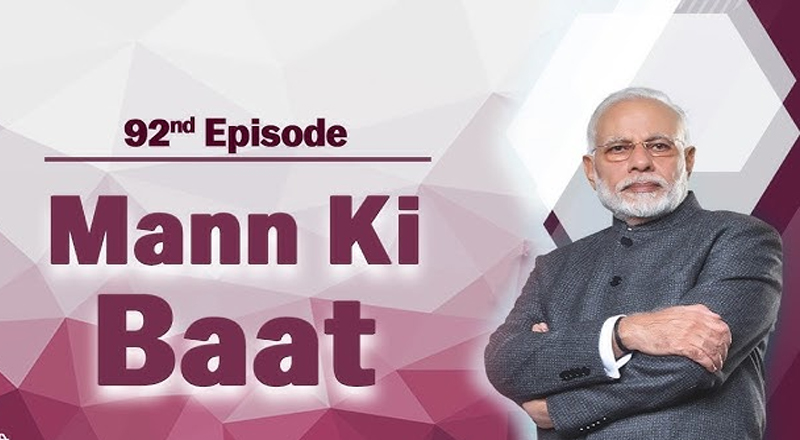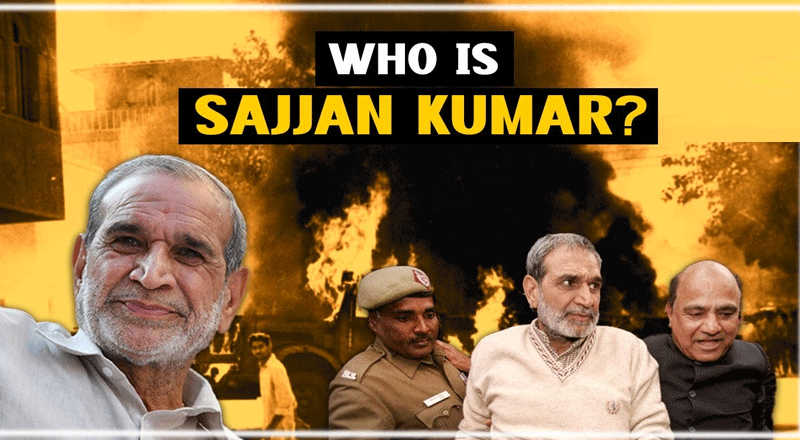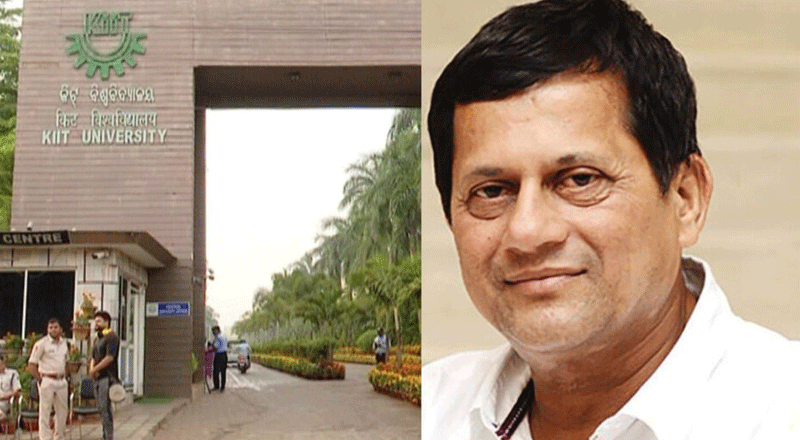My dear countrymen, Namaskar! In this month of August, all your letters, messages and cards have soaked my office in the hues of the tricolor. I have hardly come across any letter which does not carry the tricolor, or does not talk about the tricolor and Freedom. Children and young friends have sent beautiful pictures and artwork on the Amrit Mahotsav. In this month of independence, in our entire country, in every city, every village, the nectar of Amrit Mahotsav is flowing. On this special occasion of Amrit Mahotsav and Independence Day, we have seen the collective might of the country. There has been a sense of realisation. Such a big country, so many diversities, but when it came to hoisting the tricolor, everyone seemed to flow in the same spirit. People themselves came forward, becoming the vanguard of the pride of the tricolor. We had also seen the spirit of the country in the cleanliness campaign and the vaccination campaign. We are getting to witness the same spirit of patriotism again in the Amrit Mahotsav. Our soldiers hoisted the tricolor on the peaks of high mountains, on the borders of the country, and in the middle of the sea. People also came up with different innovative ideas for the tricolor campaign. Such as young friend, Krishnil Anil ji. Anil ji is a puzzle artist and has created beautiful tricolor mosaic art in record time. In Kolar, Karnataka, people presented a unique sight by holding the tricolor that was 630 feet long and 205 feet wide.
In Assam, government employees created a 20 feet tricolor with their own hands to hoist at the Dighalipukhuri War memorial. Similarly, people in Indore made the map of India through a human chain. In Chandigarh, the youth made a giant human tricolor. Both these efforts have also been recorded in the Guinness Records. In the midst of all this, a great inspirational example was also seen at the Gangot Panchayat of Himachal Pradesh. Here the children of migrant laborers were included as chief guests in the Independence Day Programme of the Panchayat.
Friends, these colors of the Amrit Mahotsav were seen not only in India, but also in other countries of the world. Local singers living in Botswana sang 75 patriotic songs to celebrate 75 years of India’s independence. What is more special in this is that these 75 songs were sung in languages like Hindi, Punjabi, Gujarati, Bangla, Assamese, Tamil, Telugu, Kannada and Sanskrit. Similarly, in Namibia, a special stamp has been released on the Indo-Namibian cultural-traditional relations.
Friends, I want to share with you another thing of joy. Just a few days ago, I got an opportunity to attend a program of Ministry of Information and Broadcasting, Government of India. There, they had organised the screening of ‘Swaraj’, the Doordarshan serial. I got an opportunity to attend its premiere . This is a great initiative to acquaint the younger generation of the country with the efforts of unsung heroes and heroines who took part in the freedom movement. It is telecast every Sunday at 9 pm on Doordarshan. And I was told that is going to continue for 75 weeks. I urge you to take time out to watch it yourself and do show it to the children of the house. And people from schools-colleges can also record it and compose a special program when the school-college opens on Monday, so that a new awakening will arise in our country about these great heroes of the birth of Freedom. The Azadi Ka Amrit Mahotsav will continue till next year i.e. August 2023. For the country, for the freedom fighters, the writings and events that we have been organising, we have to carry them forward.
My dear countrymen, the knowledge of our forefathers, the farsightedness of our ancestors and the EkAtmaChintan, integral self realisation is so significant even today; when we go deep into it, we are filled with wonder. Our thousands of years old Rigveda! In Rigveda it is said:-
Oman-mapo manushi: amritkam dhaat tokay tanayaaya shyamyo: |
Yooyam Hisatha Bhishjo Matritama Vishwasya Sthatu: Jagato Janitri: ||
Meaning – O water, you are the best friend of humanity. You are the giver of life, food is produced from you, and from you is the well-being of our children. You are the protector of us and keep us away from all evils. You are the best medicine, and you are the sustainer of this universe.
Think about it…the importance of water and water conservation has been explained in our culture thousands of years ago. When we see this knowledge in today’s context, we are thrilled, but when the nation accepts this knowledge as its strength, then their power increases manifold. You will remember, in ‘Mann Ki Baat’, I had talked about Amrit Sarovar four months ago. After that, the local administration got active in different districts, voluntary organizations came together and local people connected… – and Lo & behold, the construction of Amrit Sarovars has become a mass movement. When there is a deep feeling to do something for the country, realize one’s duties, concern for the coming generations, then the capabilities also get added up, and the resolve becomes noble.
I have come to know of a brilliant effort from Warangal in Telangana. A new Gram Panchayat has been formed here, named ‘Mangtya-Valya Thanda’. This village is close to the Forest Area. There was a place near the village where a lot of water used to accumulate during monsoon. On the initiative of the villagers, this place is now being developed under the Amrit Sarovar campaign. This time due to the rains during the monsoon, this lake has been filled to the brim with water.
I also want to tell you about the Amrit Sarovar built in Mocha Gram Panchayat in Mandla, Madhya Pradesh. This Amrit Sarovar is built near the Kanha National Park and has further enhanced the beauty of this area. The newly constructed Shaheed Bhagat Singh Amrit Sarovar in Lalitpur, Uttar Pradesh is also drawing a lot of people. This lake, built in the Niwari Gram Panchayat, is spread over 4 acres. The tree plantation on the shoreline of the lake is enhancing its beauty. People are also coming from far and wide to see the 35 feet high tricolor near the lake. This campaign of Amrit Sarovars is going on in full swing in Karnataka as well. Here in the village ‘Bilkerur’ of Bagalkot district, people have built a very beautiful Amrit Sarovar. In fact, in this area, people had a lot of problems because of the water flowing down from the mountain; farmers and their crops also suffered losses. To make the Amrit Sarovar, the people of the village channelized all the water and brought it aside. This also solved the problem of floods in the area. The Amrit Sarovar Abhiyan not only solves many of our problems today; it is equally necessary for our coming generations. Under this campaign, at many places, old water bodies are also being rejuvenated. Amrit Sarovars are being used for quenching the thirst of animals as well as for farming. Due to these ponds, the ground water table of the surrounding areas has risen. At the same time, greenery is also increasing around them. Not only this, people at many places are also engaged in preparations for fish farming in Amrit Sarovars. I urge all of you, especially my young friends, to actively participate in the Amrit Sarovar campaign and lend full strength to these efforts of water conservation & water storage and take them forward.
My dear countrymen, an interesting project is being run in Bongai village of Assam – Project Sampoorna. The purpose of this project is to fight against malnutrition and the method too is very unique. Under this, the mother of a healthy child from an Anganwadi center meets the mother of a malnourished child every week and discusses all the nutrition related information. That is, one mother becomes a friend of another mother, helps her, and teaches her. With the help of this project, in this region, in one year, malnutrition has been eradicated in more than 90 percent children.
Can you imagine, whether song and music and bhajans can also be used to remove malnutrition? It was successfully used in “Mera Bachha Campaign”; the “Mera Bachha Abhiyan” in Datia district of Madhya Pradesh. Under this, bhajan-kirtans were organized in the district, in which teachers as nutrition gurus were called. A Matka program was also held, in which women bring a handful of grains to the Anganwadi center and with this grain, a ‘Balbhoj’ is organized on Saturdays. Besides this increase in the attendance of children in Anganwadi centers, malnutrition has also shown a dip. A unique campaign is also going on in Jharkhand to increase awareness about malnutrition. A snake-ladder game has been prepared in Giridih, Jharkhand. Through play, children learn about good and bad habits.
Friends, I am telling you about so many innovative experiments related to malnutrition, because all of us also have to join this campaign in the coming month. The month of September is dedicated to festivals as well as a big campaign related to nutrition. We celebrate the Poshan Maah every year from the 1st to the 30th of September. Many creative and diverse efforts are being made all over the country against malnutrition. Better use of technology and also public participation has become an important part of the Nutrition campaign. From providing mobile devices to millions of Anganwadi workers in the country, a Poshan Tracker has also been launched to monitor the accessibility of Anganwadi services. In all the Aspirational Districts and the states of the North East, 14 to 18 year old daughters have also been brought under the purview of the POSHAN Abhiyaan. The solution to the malady of malnutrition is not limited just to these steps – in this fight, many other initiatives also play an important role. For example, take the Jal Jeevan Mission…this mission is also going to have a huge impact in making India malnutrition free. Efforts for social awareness play an important role in tackling the challenges of malnutrition. I would urge all of you in the coming nutrition month, to take part in the efforts to eradicate malnutrition.
My dear countrymen, Sridevi Varadarajan ji from Chennai has sent me a reminder. She has written something like this on MyGov – There are less than 5 months left for the New Year to come, and we all know that the ensuing New Year will be celebrated as the International Year of Millets. She has also sent me a millet map of the country. She’s also asked if you could discuss this in the upcoming episode of ‘Mann Ki Baat’. It gives me immense happiness to see this kind of spirit in my countrymen. You will remember that the United Nations has passed a resolution declaring the year 2023 as the International Year of Millets. You will also be very happy to know that this proposal of India had been accepted by more than 70 countries.
Today, around the world, craze for these very coarse grains, millets, is rising. Friends, when I talk about coarse grains, I want to share one of my efforts with you today. For the last some time, when any foreign guests come to India, when Heads of State comes to India, it is my endeavor to get dishes made from the millets of India, that is, our coarse grains in the banquets. And the experience has been that these dignitaries have very much relished them and they also try to collect a lot of information about our coarse grains, about Millets. Millets, coarse grains, have been a part of our Agriculture, Culture and Civilization since ancient times. Millets are mentioned in our Vedas, and similarly, they are also mentioned in Purananuru and Tolkappiyam. If you go to any part of the country, you will definitely find different types of Millets in the food of the people there. In millets too, just like our culture, a lot of diversity is found. Jowar, Bajra, Ragi, Sawan, Kangni, Cheena, Kodo, Kutki, Kuttu, all these are just Millets. India is the largest producer of Millets in the world; hence the responsibility of making this initiative a success also rests on the shoulders of us Indians. Together we all have to make it a mass movement, and also increase the awareness of Millets among the people of the country. And friends, you know very well, millets are also beneficial for the farmers and especially the small farmers. In fact, the crop gets ready in a very short time, and does not require much water either.
For our small farmers, millets are especially beneficial. Millet hay is also considered the best fodder. Nowadays, the young generation is much focused on Healthy Living and Eating. Even if you look at it this way, millets contain plenty of protein, fiber, and minerals. Many people even call it a Superfood. Millets have many benefits, not just one. Along with reducing obesity, they also reduce the risk of diabetes, hypertension and heart related diseases. Along with that, they are also helpful in preventing stomach and liver ailments. We referred to malnutrition, just a while ago. Millets are also very beneficial in fighting malnutrition, since they are packed with energy as well as protein. Today a lot is being done to promote Millets in the country. Along with focusing on research and innovation related to this, FPOs are being encouraged, so that, production can be increased. It is my request to my farmer brothers and sisters to adopt Millets, that is, coarse grains, more and more and benefit from it. It feels good to see that many such start-ups are emerging today, which are working on Millets. Some of these are making Millet Cookies, while some are also making Millet Pancakes and Dosa. There are some who are making Millet Energy Bars, and Millet Breakfasts. I wish all the very best to all the people working in this field. In this festive season, we also use Millets in most of the dishes. You must share the pictures of such delicacies made in your homes on social media, so that it helps in increasing awareness among people about Millets.
My dear countrymen, just a few days ago, I saw news from Jorsing village in Siang district of Arunachal Pradesh. This news was about a change that the people of this village had been waiting for, for many years. In fact, in Jorsing village this month, 4G internet services have started from Independence Day. Like, earlier people used to be happy when electricity reached the village; now, in new India, the same happiness is felt when 4G reaches there. There has been a new sunrise in the form of 4G in the remote areas of Arunachal and North East; internet connectivity has brought a new dawn. Facilities which were once available only in big cities, have been brought to every village through Digital India. For this reason, new digital entrepreneurs are rising in the country. Setha Singh Rawat ji of Ajmer district of Rajasthan runs ‘Darzi Online’, an’E-store’. You will wonder what is Darzi online! Actually, Setha Singh Rawat used to do tailoring work before Covid. When Covid came, Rawat ji did not take this challenge as a difficulty; rather as an opportunity. He joined the ‘common service centre’ i.e. CSC E-Store, and started working online. He saw that customers were placing orders for masks in large numbers. He hired some women and started getting masks made. After this he started his online store named ‘Darzi Online’ in which he started selling stitched clothes of many other kinds. Today, with the power of Digital India, the work of Setha Singh ji has increased so much, that now he gets orders from all over the country. He has given employment to hundreds of women here. Digital India has also turned Om Prakash Singh ji of Unnao, UP into a digital entrepreneur. He has established more than one thousand broadband connections in his village. Om Prakash ji has also built a free wifi zone around his common service centre, which is helping the needy people a lot. Om Prakash ji’s work has increased so much that he has hired more than 20 people. These people are providing broadband connection to the schools, hospitals, tehsil offices and Anganwadi centers of the villages and are also getting employment from it. Like the common service center, there are many such success stories are being seen on the Government E-market place i.e. GEM portal.
Friends, I get many such messages from villages, which share with me the changes brought about by the internet. The internet has changed the way our young friends study and learn. For example, when Gudiya Singh of UP came to her in-laws’ house in Amoiya village of Unnao, she was worried about her studies. But, BharatNet resolved her concern. Gudiya carried on her studies through the internet, and also completed her graduation. How many such lives in villages are getting new strength from the Digital India campaign. Do write to me as much as you can about the Digital Entrepreneurs of the villages, and also share their success stories on social media.
My dear countrymen, sometime back, I received a letter from Ramesh ji, a listener of ‘Mann Ki Baat’ from Himachal Pradesh. Ramesh ji has enumerated many specialities of the hills in his letter. He wrote that the settlements on the mountains might be far apart, but the hearts of the people are very close to each other. Indeed, we can learn a lot from the lives of the people living in the hills. The first lesson we get from the lifestyle and culture of the hills is that if we do not come under the pressure of circumstances, we can easily overcome them, and secondly, how we can become self-sufficient with local resources. The first lesson that I mentioned, a beautiful picture of it is being seen in the Spiti region these days. Spiti is a tribal area. Here, these days, pea plucking goes on. This is a laborious and difficult task on hill farms. But here, the women of the village gather, and together, pluck peas from each other’s fields. Along with this task, women also sing the local song ‘Chhapra Majhi Chhapra’. That is, mutual cooperation here is also a part of folk tradition. The best example of utilization of local resources is also found in Spiti. Farmers who rear cows in Spiti, dry up the dung and fill it in sacks. When winter comes, these sacks are laid out in the sheds where the cows live, which is called khud here. During snowfall, these sacks give protection to the cows from the cold. After winters, this cow dung is used as manure in the fields. That is, the animals’ protection using animal waste, and also manure for the fields. The cost of cultivation is also low, and the yield in the fields is also high. That is why this area, these days, is also becoming an inspiration for natural farming.
Friends, many such commendable efforts are also being seen in our, other hill state, Uttarakhand. Many types of medicines and plants are found in Uttarakhand, which are very beneficial for our health. One of them is the fruit – Bedu. It is also known as Himalayan Fig. In this fruit, minerals and vitamins are found in abundance. People consume it not only in the form of fruit, but it is also used in the treatment of many diseases. In view of these qualities of this fruit, now the juice of Bedu, jams, chutneys, pickles and dry fruits prepared by drying them have been launched in the market. With the initiative of the Pithoragarh administration and the cooperation of the local people, it has been successful in bringing Bedu to the market in different forms. Bedu has also been launched in the online market by branding it as Pahari Fig. Due to this, farmers have not only found a new source of income, but the benefits of the medicinal properties of Bedu have started reaching far and wide as well.
My dear countrymen, in the beginning of ‘Mann Ki Baat’, today, we referred to the Azadi ka Amrit Mahotsav. Along with the great festival of Independence Day, many more festivals are lined up in the coming days. Just a few days from now, is the festival of Ganesh Chaturthi, the festival of worship of Bhagwan Ganesha. Ganesh Chaturthi, that is, the festival of blessings of Ganpati Bappa. The festival of Onam is also commencing before Ganesh Chaturthi. Onam, especially in Kerala, will be celebrated with a sense of peace and prosperity. Hartalika Teej too is on the 30th of August. The festival of Nuakhai will also be celebrated in Odisha on the 1st of September. Nuakhai simply means new food, that is, this too, like many other festivals, is a festival associated with our agricultural traditions. Meanwhile, there will also be the Samvatsari festival of the Jain community. All these festivals of ours are synonymous with our cultural prosperity and vitality. I wish you all the best for these festivals and special occasions. Along with these festivals, tomorrow on the 29th of August, National Sports Day will also be celebrated on the birth anniversary of Major Dhyanchand ji. May our young sportspersons continue to raise the glory of our tricolor on global forums, this will be our tribute to Dhyan Chand ji. Let us all keep working together for the country like this; keep raising the honor of the country…With this wish I conclude my point. Next month, we will have ‘Mann Ki Baat’ once again.
Thank you very much!





